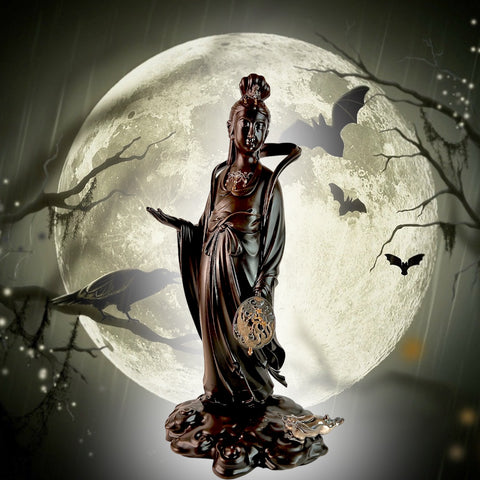"THE MAGICAL CALENDAR OF Esprit SABBATHIER":
EXTREMELY RARE OCCULT SCIENCE Original Drawing
This calendar was certainly originaly destined to illustrate the Book "Idealis umbra Sapientiae generalis"
Rare Magical Rosicrucian Calendar : Calendarium Naturale Magicum Perpetuum
Magical Alchemical Cabalistic Rosicrucian Calendar 17 th Century
Pen and Brown Ink with Red Chalk 56 cm x 43 cmDated lower right: Innocentius Undecimus Pontifex MaximusDated lower left : Ludovicus Decimusquartus Galliarum Rex
Provenance : Private Collection « Switzerland”
Calendrier Magique Alchimique Kabbalistique Rosicrucien 17 ème Siècle
Encre brune sur papier Crayon Rouge 56 cm x 43 cmCalendarium Naturale Magicum Perpetuum
From Wikipedia, the free encyclopedia The Calendarium Naturale Magicum Perpetuum is a late renaissance (c.1619-1620) grimoire and esoteric print of calendar engravings. Its full title is Magnum Grimorium sive Calendarium Naturale Magicum Perpetuum Profundissimam Rerum Secretissimarum Contemplationem Totiusque Philosophiae Cognitionem Complectens. It is in three sheets, measuring more than four feet long and about two feet wide, and includes an early example of a Pentagrammaton.The “author” in the 1619 (or 1620) Frankfurt print is given as Johann Baptist Grossschedel von Aicha (Frankfurt 1620), and attributes some of the engravings to Tycho Brahe. The original engraver is given as Theodor de Bry (Flemish-born German engraver, 1528–98) as originally published in 1582. The 1620 engraver used by Grossschedel may be Matthäus Merian the Elder (Swiss engraver, 1593–1650). The work predated, and influenced, the Rosicrucian furor. Glasgow University Library catalogue entry “This is a copy of the ‘Calendarium Naturale Magicum’, compiled by Grossschedel von Aicha and published by de Bry in 1620. The emblematic figures from the original engraving have been cut up into individual sections and pasted into this manuscript, and the text from the original plate added in black and red lettering. Each page is set within a red border decorated at the top. The Calendarium Naturale Magicum is thus analysed in its various sections ‘Tabula Prima… Tabula Duodecima’. Additional text material in way of explanation and examples has been added to the sections within the Tabula Septima dealing with the seven planetary onomantic tables of fortune.”Lynn Avery Hunt, Margaret C. Jacob, W. W. Mijnhardt – Bernard Picart and the first global vision of religion 2010 Page 158 “Theodor de Bry (Flemish-born German, 1528–98) or Matthäus Merian the Elder (Swiss, 1593–1650) Calendarium Naturale Magicum Perpetuum Profundissimam Rerum Secretissimarum Contemplationem Totiusque Philosophiae Cognitionem Complectens, ..Arthur Versluis Restoring paradise: Western esotericism, literature, art, and … 2004 Page 77 – “Among the first of these, predating the Rosicrucian furor but certainly influencing its later productions, was the Calendarium Naturale Magicum Perpetuum Profundissimam Rerum Secretissimarum Contemplationem [Perpetual Natural Magical …”


